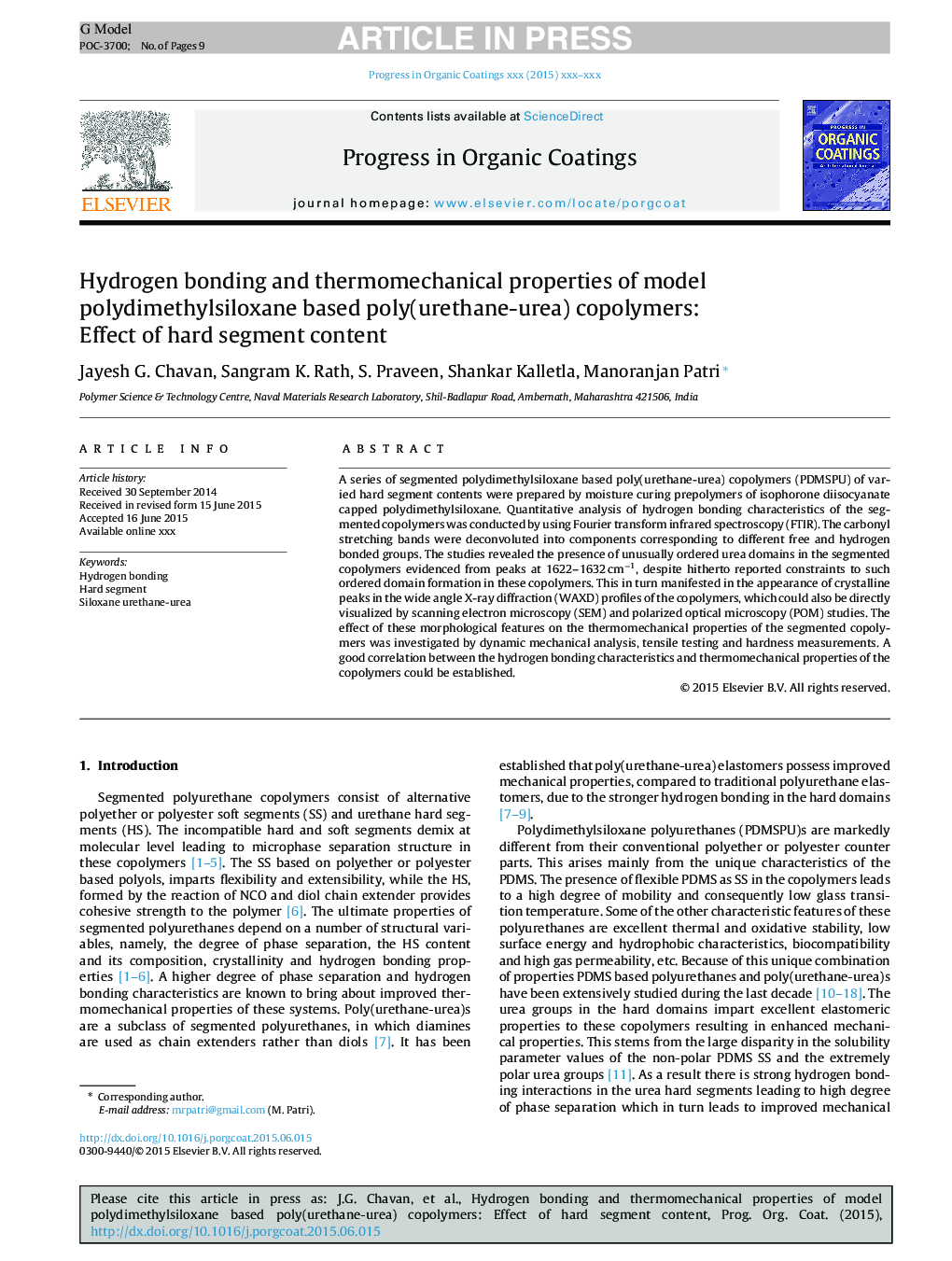| Article ID | Journal | Published Year | Pages | File Type |
|---|---|---|---|---|
| 7106747 | Progress in Organic Coatings | 2016 | 9 Pages |
Abstract
A series of segmented polydimethylsiloxane based poly(urethane-urea) copolymers (PDMSPU) of varied hard segment contents were prepared by moisture curing prepolymers of isophorone diisocyanate capped polydimethylsiloxane. Quantitative analysis of hydrogen bonding characteristics of the segmented copolymers was conducted by using Fourier transform infrared spectroscopy (FTIR). The carbonyl stretching bands were deconvoluted into components corresponding to different free and hydrogen bonded groups. The studies revealed the presence of unusually ordered urea domains in the segmented copolymers evidenced from peaks at 1622-1632Â cmâ1, despite hitherto reported constraints to such ordered domain formation in these copolymers. This in turn manifested in the appearance of crystalline peaks in the wide angle X-ray diffraction (WAXD) profiles of the copolymers, which could also be directly visualized by scanning electron microscopy (SEM) and polarized optical microscopy (POM) studies. The effect of these morphological features on the thermomechanical properties of the segmented copolymers was investigated by dynamic mechanical analysis, tensile testing and hardness measurements. A good correlation between the hydrogen bonding characteristics and thermomechanical properties of the copolymers could be established.
Keywords
Related Topics
Physical Sciences and Engineering
Chemical Engineering
Process Chemistry and Technology
Authors
Jayesh G. Chavan, Sangram K. Rath, S. Praveen, Shankar Kalletla, Manoranjan Patri,
